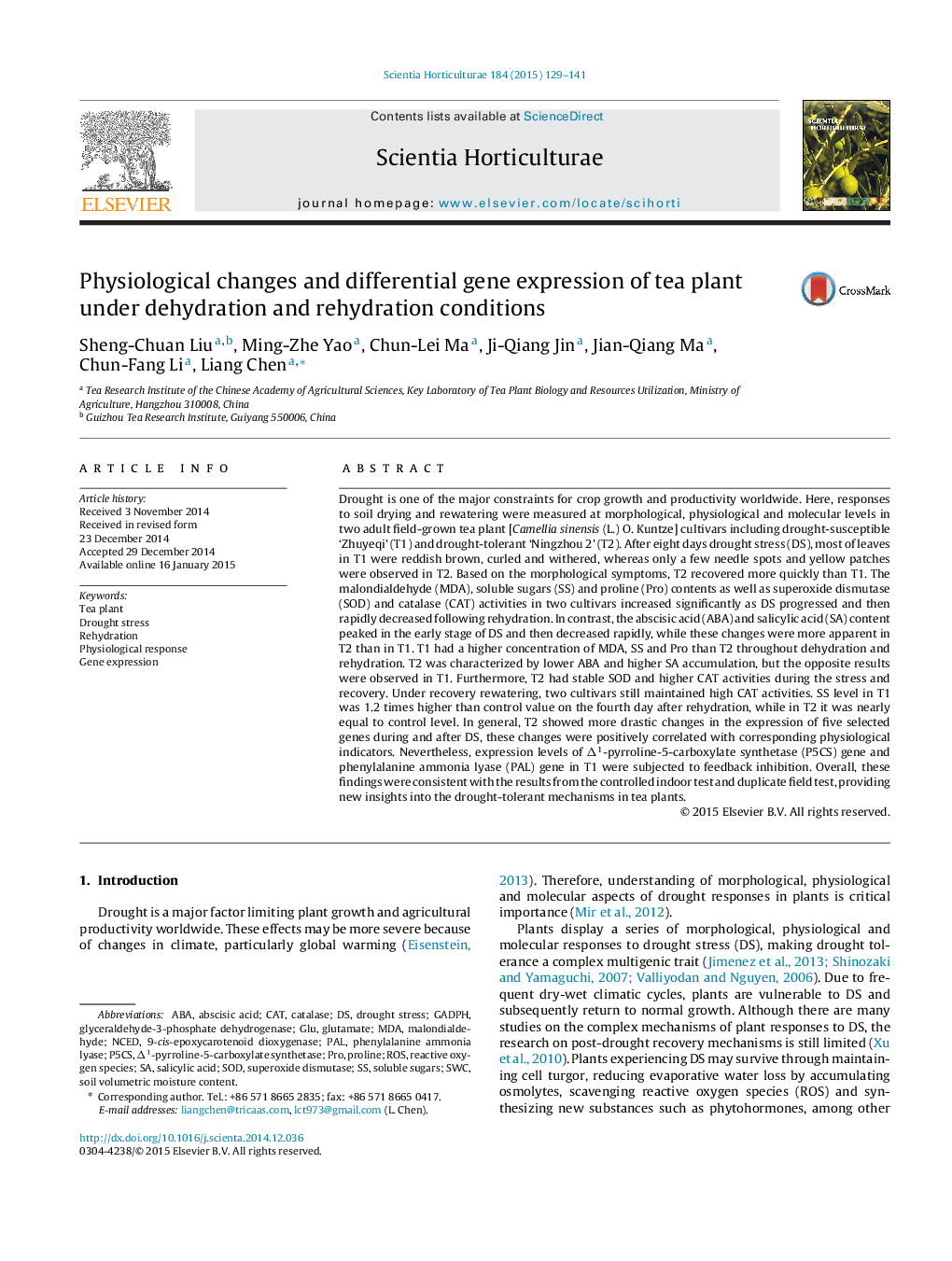| کد مقاله | کد نشریه | سال انتشار | مقاله انگلیسی | نسخه تمام متن |
|---|---|---|---|---|
| 4566477 | 1628814 | 2015 | 13 صفحه PDF | دانلود رایگان |
• ABA and SA content increased markedly under early drought and then decreased rapidly in tea plants.
• Drought susceptible cultivar accumulated more soluble sugars (SS) and proline.
• Drought tolerant cultivar had lower ABA and higher SA accumulation as well as stable SOD and higher CAT activities.
• The index of CAT activity and SS content could be used for screening tea cultivars with high recoverability.
• The expression of PAL and P5CS genes was subjected to feedback inhibition in susceptible cultivar.
Drought is one of the major constraints for crop growth and productivity worldwide. Here, responses to soil drying and rewatering were measured at morphological, physiological and molecular levels in two adult field-grown tea plant [Camellia sinensis (L.) O. Kuntze] cultivars including drought-susceptible ‘Zhuyeqi’ (T1) and drought-tolerant ‘Ningzhou 2’ (T2). After eight days drought stress (DS), most of leaves in T1 were reddish brown, curled and withered, whereas only a few needle spots and yellow patches were observed in T2. Based on the morphological symptoms, T2 recovered more quickly than T1. The malondialdehyde (MDA), soluble sugars (SS) and proline (Pro) contents as well as superoxide dismutase (SOD) and catalase (CAT) activities in two cultivars increased significantly as DS progressed and then rapidly decreased following rehydration. In contrast, the abscisic acid (ABA) and salicylic acid (SA) content peaked in the early stage of DS and then decreased rapidly, while these changes were more apparent in T2 than in T1. T1 had a higher concentration of MDA, SS and Pro than T2 throughout dehydration and rehydration. T2 was characterized by lower ABA and higher SA accumulation, but the opposite results were observed in T1. Furthermore, T2 had stable SOD and higher CAT activities during the stress and recovery. Under recovery rewatering, two cultivars still maintained high CAT activities. SS level in T1 was 1.2 times higher than control value on the fourth day after rehydration, while in T2 it was nearly equal to control level. In general, T2 showed more drastic changes in the expression of five selected genes during and after DS, these changes were positively correlated with corresponding physiological indicators. Nevertheless, expression levels of Δ1-pyrroline-5-carboxylate synthetase (P5CS) gene and phenylalanine ammonia lyase (PAL) gene in T1 were subjected to feedback inhibition. Overall, these findings were consistent with the results from the controlled indoor test and duplicate field test, providing new insights into the drought-tolerant mechanisms in tea plants.
Journal: Scientia Horticulturae - Volume 184, 5 March 2015, Pages 129–141
